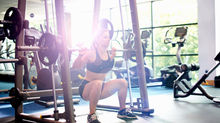Improve your posture, improve your golf
- Rachael Tibbs
- Mar 19, 2017
- 4 min read

Good posture is imperative if you are to get the most out of your golf swing and game. Without it you are susceptible to injury due to muscle imbalances that occur from spending too much time in poor posture; this then causes a reduction in adequate movement and stability that will hinder the way you swing the golf club.
Good posture can help you to be more balanced and stable throughout your swing, it will allow more rotation so that you can sequence and time your swing more efficiently, thus increasing consistency of your swing and allowing you to produce more power and speed through the ball.
The most common postural issues seen at set-up and address are rounding of the upper back and torso (often referred to as C-posture due to the C shape made by the rounding of the back) and an excessive curve and extension of the lower (referred to as S-posture, again due to the visible extended arch seen in the lower back).
C-Posture (rounding of the upper back and shoulders)
If you demonstrate this type of posture, not just in your golf set-up but also in your natural posture, this is really going to hinder your ability to rotate your torso which can cause all sorts of compensations in your golf swing. Standing up in your swing or gaining height is a common movement for golfers who are trying to find rotation that they just don’t have. This is going to make it very difficult to create the same golf swing consistently.
S-Posture (arch and extension of lower back)
An arch in your lower back is what we would refer to as S-posture and is one of the key causes of lower back pain amongst golfers. As well as causing tightness or pain; it can also limit your ability to initiate your downswing with your lower body. This can make it difficult for you to maintain good posture in your swing and lead to inconsistency and timing issues.
If you are struggling with either of these postural issues you are going to be restricting how much speed and power you can create in your swing.
Many of these postural issues are caused by our daily movement habits, as it is more common than not that we spend much of our time sat in a car driving to/from work, to then sit at a desk for 8 hours and then sat at home eating dinner or watching television, before we retire to bed and sleep for 7 hours in the foetal position.
How do you improve it?
It is unrealistic to ask someone to change jobs and stop driving their car to travel the 20 miles a day to work. However, there are small things that you can do on a daily basis that can counteract the long hours of sitting.
Move about more often when possible
Get up from your desk when you can, stand at your desk and walk around
Sit up nice and tall, don’t slouch – it’s easier to slouch but by doing this our muscles in our back weaken and our chest and shoulders become tighter (just think about how much better your golf will be 😊
Go for a walk at lunchtime or when you get home in the evening, if not potter about and be more active on an evening instead of sitting in front of the television every night.
Be more conscious of your posture when you carry yourself
If you feel slumped sit up tall with your shoulders back
Stand up tall, shoulders back and chest out.

Re-think your gym programme
Do you spend most of your time in the gym doing bicep curls, leg presses and fixed machine exercises? These are great in some cases but not when we are trying to improve posture and movement. Try compound movements such as squats, lunges and press ups – these all challenge your core postural muscles that stabilise the spine.
Do you like to bench press, chest fly and other pressing exercises? If so you are exacerbating the issue. Your chest is probably already too tight due to your rounded back so you need to stretch these and get using those back muscles – starting doing inverted bodyweight rows, cable rows and DB rows.
Also if you tend to split workouts between arms/chest vs' leg day and then neglect to work legs as often as arms/chest you are neglecting the most important muscle in golf. Strong glutes (buttocks) are key for an efficient and powerful swing; and as they are the biggest muscle in the body they should be strong. Strengthening these and the abdominal and oblique muscles helps to stabilise the spine and pelvis which is key for good starting and dynamic posture.
If you would like more information on how you can improve your posture for golf, check out our Better Posture, Better Golf video on YouTube where you can also find a number of exercises that can help you play better golf.









































Comments